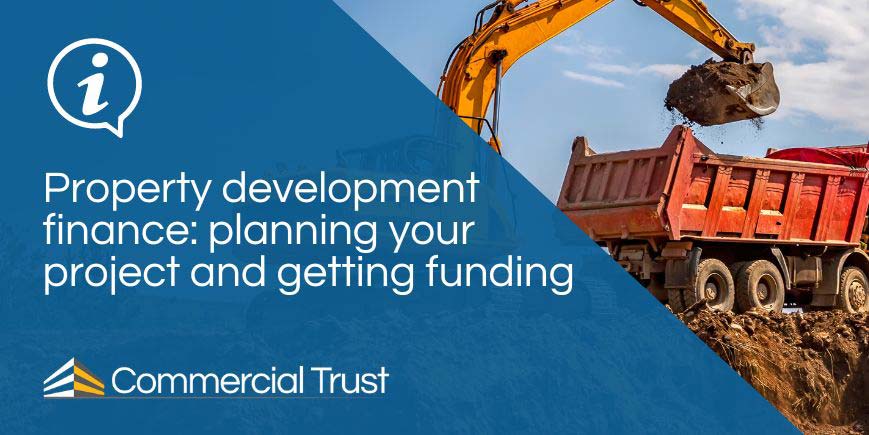This information should not be interpreted as financial, tax or legal advice. Mortgage and loan rates are subject to change.

Categories: guides | development finance | development finance guides
This guide will explain what development exit finance is, what it is used for, and the requirements a borrower will typically need to meet in order to take it out.
Contents
What is development exit finance?
Development exit finance is essentially a type of bridging loan used by property developers when they find themselves in difficult circumstances with a project.
By far the most common situations are either where the developer needs more funds, or time, in order to see the project to completion. This will be either by completing unfinished work, or by securing the sale of a property when it is taking longer than expected to do so.
Development exit finance is by no means a ‘Plan A’, and should only be used if, as the property developer, you find yourself in a situation where you need it.
It goes without saying that before you decide to take out exit finance, you should figure out how much the total cost of the loan will be.
You will then have to work out whether it makes financial sense to take out the loan.
Say you are struggling to sell some newly built properties and have to reduce their price to get them off your books, will taking out exit finance to buy you time to sell mean the project will remain profitable? If so, by how much? If not, this might not be the right course of action.
In a worst case scenario, it may be you have to face into just breaking even, or a loss, but have to use exit finance to overcome an obstacle you are facing.
When to use it
Development exit finance is a type of bridging loan, and while bridging loans as a whole are highly versatile, development exit finance is typically used for three scenarios.
Buy yourself breathing room
The most typical use is where your project is near completion, but the term of your loan is ending before you’ll complete and sell the unit/s built.
In this case, you may be able to pay off the loan with development exit finance. This ‘switch’ aims to buy you enough time to either complete or sell the units within the development.
Top up your funds
As a property developer, a problem you may encounter is running out of funds from your initial development finance.
This would mean your lender is either unable, or unwilling, to provide any further draw-downs, and you need to look for alternative sources of funds.
This is another use for development exit finance; in order to continue funding a project and see it through to completion.
Release capital from a project before you sell
Development exit finance can also be used to release capital from a project before you sell or refinance.
If, for whatever reason, you want to access funds quickly - perhaps you have other time-sensitive financial obligations – development exit finance can be used to release capital from the project before the sale of the unit/s has paid out or in advance of completing long-term finance.
How does development exit finance work?
There are some key aspects of the development exit finance process that a developer will need to know before they decide to go down this route.
A property must be water and wind tight
One requirement to secure development exit finance is that, before you do, the unit/s must be both water and wind tight. This is because this type of loan is typically used at the end of the build cycle.
If your project is not water and wind tight, but you still need a loan, either development finance or a heavy refurbishment bridging loan are alternatives that we can help you with.
You will need a viable exit strategy
You will have to provide an exit strategy to the development exit finance lender, before being given the loan.
If you are planning to sell the units built, then a portion of the proceeds will go towards the loan.
If, however, you are planning to keep the units, long-term refinancing through a mortgage is also a viable exit strategy.
You will need to provide collateral
You will also have to provide collateral before you can take out this type of loan, usually this would be the development builds themselves – but if you want, you can provide other forms of collateral, this can come in the form of other properties, or cash.
A risk assessment will be carried out
Before you can take out development exit finance, a lender will conduct a risk assessment to determine the viability of the loan.
This is so the lender can decide not only whether to lend against the project, but also to decide on the interest rate appropriate for the risk. A lower risk project tends to receive a lower rate.
Lower LTVs get better rates
The lower the amount of debt in the project, the better the rate you can achieve when taking out development exit finance.
In order to achieve a lower rate on exit finance, you will have to make sure that the standard development finance taken out at the start of the project is a lower proportion of the total costs associated with the build – i.e. the loan to value (LTV) is low.
The maximum loan to value available with development exit finance is 75% of the gross development value, so lower rates will typically be available to LTV’s of around 50%.
The lender will also afford lower rates to projects with a lower loan-to-gross development value (LTGDV). This means that the higher the market price of the newly built units, the more willing a lender is to charge a lower borrowing cost.
Get expert help securing the funds you need
The circumstances that typically find you needing development exit finance can be very stressful. Getting a workable solution in place, quickly, will be easiest dealing with experts in this field.
At Commercial Trust we understand the nature of these situations and our job is to turn it around and alleviate the pressure you are under.
Contact our specialists today to discuss your particular needs and we can get straight on with finding a solution – we can get a lender decision in as little as 24 hours.



